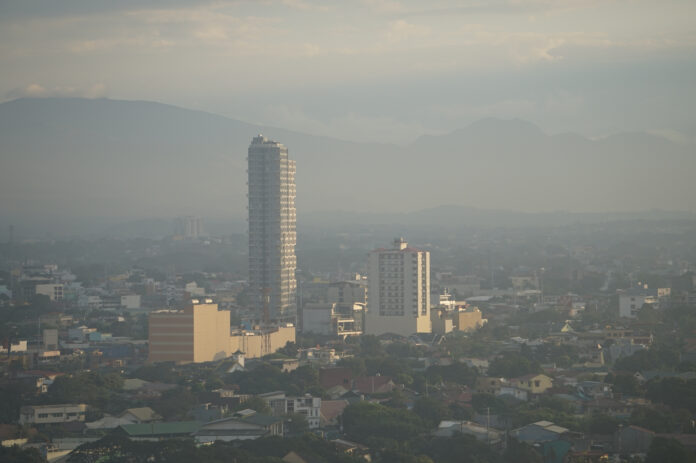A recent study on the level of air pollutants in Metro Manila showed the cities of Taguig, Caloocan and Quezon with the highest level of total suspended particulates in the atmosphere.
The study, undertaken by Dawn May M. Patilan, Rodolfo A. Romarate II, and Hernando P. Bacosa of the Environmental Science Graduate Program, Department of Biological Sciences, College of Science and Mathematics of the Mindanao State University–Iligan Institute of Technology, was conducted to fill the gap in assessing the levels of particulate matter, particularly mercury and lead, in Metro Manila’s ambient atmosphere.
The study, published in the June 2024 edition of the Philippine Journal of Science, utilized a one-hour sampling period at seven different locations across Metro Manila.
Data collection was performed using a respirable dust sampler with a flow rate of 1.4 cubic meters per minute. Mercury concentrations were measured using cold vapor atomic absorption spectroscopy, while lead concentrations were assessed through flame atomic absorption spectroscopy.
The results of the tests indicated that Taguig had the highest level of total suspended particulates at 524.07 µg/NCM, or micrograms per normal cubic meter. Caloocan was second at 459.92 µg/NCM while Quezon City was third at 434.50 µg/NCM.
The study reported that Parañaque had moderate TSP levels, ranging between 291.69 and 347.36 µg/NCM, while Valenzuela had the lowest at 263.85 µg/NCM.
Mercury concentrations were found highest in Manila, with a level of 0.09 µg/m³ or micrograms per cubic meter. Valenzuela followed with a concentration of 0.009 µg/m³, while Taguig and Quezon City reported the lowest levels at 0.001 µg/m³. All the recorded mercury concentrations, however, were well below the Philippine Occupational Safety and Health Standards limit of 0.5 mg/m³ (50 µg/m³), suggesting compliance with legal airborne exposure limits.
Lead concentrations in the atmosphere across Metro Manila were observed to be at trace levels, remaining below the limit of detection. This indicates that while lead contamination is present, it is not significant.
The study said that elevated mercury levels in Manila could be linked to the city’s high population density and extensive industrial, commercial, and transportation activities. The study underscores the importance of monitoring heavy metal concentrations to develop effective strategies for mitigating the adverse effects of these pollutants.
Researchers said the results of this study “showed the need for a more comprehensive assessment of Metro Manila to determine the mercury and other heavy metal sources and to reduce ambient levels.”
They pointed out that a 2020 study revealed that exposure to the cadmium of the traffic enforcers in Metro Manila affects the ventricular depolarization and repolarization of the heart. “More research is necessary to learn about heavy metal contaminants in the atmosphere by expanding sampling hours and location plus types of heavy metals, as well as by adding a modeling component. Sampling during various seasons and conditions is also suggested to better understand the seasonal variability of mercury and other heavy metals in the particulate matter,” the study concluded.







